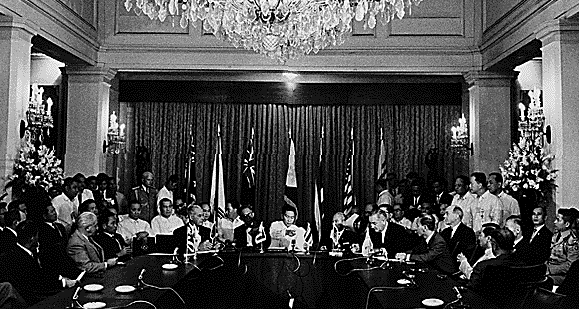
Volume IV – Number 1
Judith L. Pinkard
Abstract: This article examines the effectiveness of the Southeast Asia Treaty Organization (SEATO), which was created by the Manila Treaty in 1954. It specifically addresses the tenability of SEATO and its implications for future U.S. foreign policy in the region. After a thorough analysis of SEATO and the actions of its signatories, it was determined that SEATO is an ineffective and unsuccessful treaty for several reasons. The main reason is that several portions of the treaty were so vaguely worded that signatory states could take questionable actions against other signatory states and still fulfill the provisions of the treaty. For example, when the United States sent troops into Thailand in response to a broken ceasefire in Laos, this supposedly defensive action was within the legal framework set by the Manila Treaty. Because the ambiguity of the treaty allows for multiple competing interpretations, it is recommended that the United States withdraw from the Manila Treaty and SEATO. In addition, U.S. membership in SEATO gives the impression that the United States cares more about the members of SEATO than other non-member states in the region. Although the United States may face some initial backlash from exiting SEATO and therefore ensuring its demise, the long-term benefits of removing one’s self from such an ineffective organization far outweigh the miniscule risk of international embarrassment.
Keywords: SEATO, Manila Treaty, Truman, Eisenhower, Southeast Asia, United States, Thailand, Laos
Click here for full article


